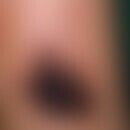Synonym(s)
DefinitionThis section has been translated automatically.
Synthetic UV absorber belonging to the groups of ketones and aromatics. BENZOPHENONE-3, BENZOPHENONE-4 and BENZOPHENONE-5 are approved as UV filters in sun creams according to the EC Cosmetics Regulation. Benzophenone-3 (C14H12O3) is a soluble organic UV-BB filter (broad spectrum filter) which protects the skin against both UV-B and UV-A radiation. The maximum concentration of Benzophenone-3 in cosmetics is 10 %.
General informationThis section has been translated automatically.
Organic light protection filters are all those UV filters whose effect is not exclusively based on the inorganic, physically active substances titanium dioxide or zinc oxide. Organic, also known as chemical UV filters, are photoactive substances that are able to absorb light quanta in a certain wavelength range (ultraviolet radiation in the range of about 280 to 400 nm = ultraviolet radiation = UVB/UVA spectrum). The absorbed UV is then released as thermal energy without penetrating the skin. In this reversible photoisomerization, the energy of the absorbed photon must correspond to the energy required to lift an electron in the molecule of the filter substance from a lower to a higher orbit. In order to protect over the entire width of the wavelengths relevant to humans from 290 to 400 nm, several chemical filters with different absorption maxima are usually combined. With a suitable combination of organic and physical filters, the content of organic filters can also be reduced with the same UV protection. This is desirable, since especially photounstable organic UV filters can cause phototoxic and photoallergic reactions depending on their concentration in the finished product.
You might also be interested in
OccurrenceThis section has been translated automatically.
Occurrence in cosmetics: as UV filter in sunscreens and cosmetics with UV protection. As UV absorber to protect e.g. fragrances, dyes and active ingredients in the product and plastics in the product packaging. The maximum concentration of octocriles is 10 %.
Occurrence in other products: as photoinitiator in UV-curing applications, such as inks and coatings in the printing industry.
Note(s)This section has been translated automatically.
The UV filters benzophenone-1 and benzophenone-3 are no longer used for sun creams today, as they frequently led to allergic reactions. In addition, benzophenone-3 is classified as an endocrine disruptor because it affects estrogen activity. Teenagers, on the other hand, should also avoid nail polish containing benzophenone.
Benzophenone-3 showed clear positive estrogenic activity in animal studies (causes increased uterine weight in immature rats).
A link between maternal BP-3 exposure and Hirschsprung's disease can be assumed (Huo W et al. (2016).
LiteratureThis section has been translated automatically.
Huo W et al. (2016) The relationship between prenatal exposure to BP-3 and Hirschsprung's disease. Chemosphere144:1091-1097.
- Nohynek GJ et al (2001) Benefit and risk of organic ultraviolet filters. Regul. Toxicol. Pharmacol 33: 285-299





